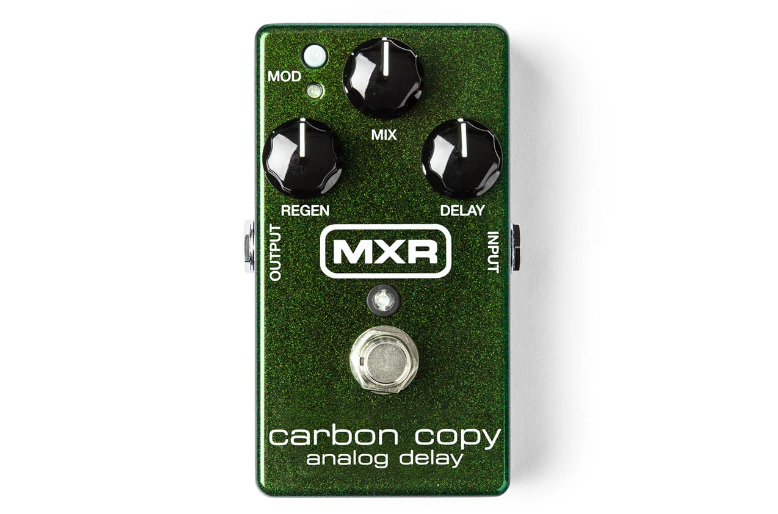10 Guitar Pedals Every Guitarist Should Own
Check out the 10 essential guitar pedals every guitarist needs. From tuners to amp simulators, this list has great pedals for every purpose.

As a guitarist, your tone is your signature. Whether you're strumming chords at an open mic night or shredding solos on a stadium stage, the right combination of guitar pedals can turn your sound from good to unforgettable. Here is a list of 10 essential guitar pedals that every guitarist should consider adding to their arsenal.
1. Tuner Pedal, the Foundation of Great Sound

Why You Need It
A tuner pedal is the unsung hero of any pedalboard. It's not glamorous, and it won't make your guitar sound like a soaring eagle or a roaring lion, but it's absolutely essential for one simple reason: no matter how great your tone is, if you're out of tune, you're going to sound bad.
How It Works
A tuner pedal allows you to quickly and accurately tune your guitar, even in noisy environments. When you activate the pedal, it mutes your signal to the amp, allowing you to tune silently on stage. Most modern tuner pedals use a digital display to show you how close you are to the correct pitch for each string.
Top Picks
Boss TU-3 is the industry standard for a reason. It's incredibly accurate, easy to read, and built like a tank. Another great option is TC Electronic PolyTune 3, an innovative pedal that allows you to strum all strings at once and see which ones need tuning, saving time during quick changes.
2. Overdrive Pedal for Warmth and Grit

Why You Need It
An overdrive pedal is the secret weapon of many guitarists. It adds a touch of warmth and grit to your tone, perfect for blues, rock, and even country music. It can make a clean amp sound like it's just starting to break up, or push an already distorted amp into smooth, singing sustain.
How It Works
Overdrive pedals work by clipping the signal, which means they cut off the peaks of the waveform. This creates harmonic distortion, which our ears perceive as warmth and grit. Unlike distortion pedals, overdrive pedals aim to emulate the sound of a tube amp being pushed to its limits.
Top Picks
Ibanez Tube Screamer has been a staple on pedalboards for decades, known for its mid-range boost and smooth overdrive. We also recommend considering the Fulltone OCD pedal that offers a wide range of tones, from light overdrive to heavy distortion.
3. Distortion Pedal for the Crunch

Why You Need It
While an overdrive pedal adds a touch of grit, a distortion pedal brings the crunch. It's essential for heavier genres like rock and metal but can also be used more subtly in other styles. A good distortion pedal can turn your clean amp into a high-gain monster.
How It Works
Distortion pedals clip the signal more aggressively than overdrive pedals, creating a more dramatic effect. This results in a more compressed sound with increased sustain and harmonic content.
Top Picks
ProCo RAT is known for its thick, meaty distortion, which is why it's been a favorite of alternative and indie rockers for decades. Boss DS-1 is a more affordable option (about $30 cheaper than ProCo RAT) that offers a classic distortion sound for a wide range of genres.
4. Reverb Pedal for Space and Depth

Why You Need It
Reverb is like salt in cooking—a little bit enhances everything, but too much can ruin the dish. A reverb pedal adds depth and space to your tone, making it sound more natural and pleasing to the ear. It comes in handy when you're playing in a dry-sounding room or if your amp doesn't have built-in reverb.
How It Works
Reverb pedals simulate the natural echo that occurs when sound waves bounce off surfaces in a room. Different types of reverb can emulate different spaces, from small rooms to large halls to otherworldly atmospheres.
Top Picks
Strymon BigSky is a high-end reverb pedal with an impressive range of reverb types and extensive control over your sound. For those on a budget, Behringer DR600 Digital Stereo Reverb offers great value with six different reverb types.
5. Delay Pedal for Echoes and Atmosphere

Why You Need It
A delay pedal is like a reverb pedal's more complex cousin. While reverb creates a general sense of space, delay creates distinct echoes of your playing. It's essential for creating atmospheric sounds, adding depth to solos, or even creating rhythmic effects.
How It Works
Delay pedals record a short section of your playing and play it back after a set amount of time. You can usually control the time between repeats, the number of repeats, and the volume of the repeats.
Top Picks
Boss DD-8 is a compact pedal that packs a wide range of delay types and features. For those who prefer analog delay, MXR Carbon Copy offers warm, bucket-brigade delay tones.
6. Compressor Pedal for Evening Out Your Dynamics

Why You Need It
A compressor pedal is like an automatic volume control. It evens out the dynamics of your playing, bringing up the volume of softer notes and reducing the volume of louder ones. This can add sustain to your notes and create a more consistent overall sound.
How It Works
Compressor pedals work by reducing the volume of signals above a certain threshold while leaving signals below that threshold unaffected to narrow down the dynamic range of your playing.
Top Picks
You will love the compact Xotic SP Compressor pedal for its high-quality compression in a small footprint. Boss is making our list again with the CS-3 Compression Sustainer, a versatile compressor with lots of compression settings and a built-in sustain control.
7. Wah Pedal for Expression

Why You Need It
The wah pedal is one of the most recognizable guitar effects. It adds a vocal-like quality to your tone, allowing for expressive lead playing and funky rhythm work. It's been used in everything from Jimi Hendrix solos to Kirk Hammett's wah-heavy licks.
How It Works
A wah pedal is essentially a sweepable EQ filter. As you rock the pedal back and forth, it emphasizes different frequencies, creating the characteristic "wah" sound.
Top Picks
Dunlop Cry Baby is the classic wah pedal used by countless guitarists over the decades. Vox V847A is another classic design, known for its slightly different voicing compared to the Cry Baby.
8. Chorus Pedal for Shimmer and Depth

Why You Need It
A chorus pedal adds richness and depth to your tone by creating the illusion of multiple guitars playing at once. It's great for adding shimmer to clean tones or thickening up distorted sounds.
How It Works
Chorus pedals work by taking your guitar signal, slightly detuning it, and mixing it back with the original signal to create a shimmering, doubled effect.
Top Picks
TC Electronic Corona Chorus offers multiple chorus types and the ability to create custom tones. Boss has the CE-2W pedal, a reissue of the classic CE-2 chorus, with vintage tones with modern reliability.
9. Boost Pedal for Pushing Tone to the Forefront

Why You Need It
A boost pedal is like a volume knob that goes to 11. It increases the strength of your signal without significantly altering your tone. This is perfect for solos, allowing you to cut through the mix without changing your basic sound.
How It Works
Boost pedals simply amplify your guitar signal. Some offer a completely clean boost, while others might add a touch of color to your tone.
Top Picks
TC Electronic Spark Booster offers up to 26dB of boost and a 2-band EQ for tone shaping. Another option with up to 26dB of clean boost is Dunlop MXR Micro Amp, a simple, one-knob pedal.
10. Amp Simulator Pedal

Why You Need It
An amp simulator pedal allows you to access a wide range of amplifier tones without having to own multiple amps. It's great for recording, practicing silently, or quickly switching between different amp sounds during a gig.
How It Works
Amp simulator pedals use digital modeling technology to recreate the sound of various guitar amplifiers. Many also include cabinet simulation and even built-in effects.
Top Picks
For powerful amp and effects modeling in a compact format, go for Line 6 HX Stomp. Another great pick is IR-200 by Boss – it combines amp modeling with impulse response technology for realistic cabinet sounds.
Many guitarists consider the above pedals essential, but tone is a personal thing, and these pedals are tools to help you express your musical voice. Don't be afraid to experiment with different pedals and different orders on your pedalboard. Your perfect tone is out there waiting to be discovered!
Follow LALAL.AI on Instagram, Facebook, Twitter, TikTok, Reddit, and YouTube for more information on all things music and AI.
